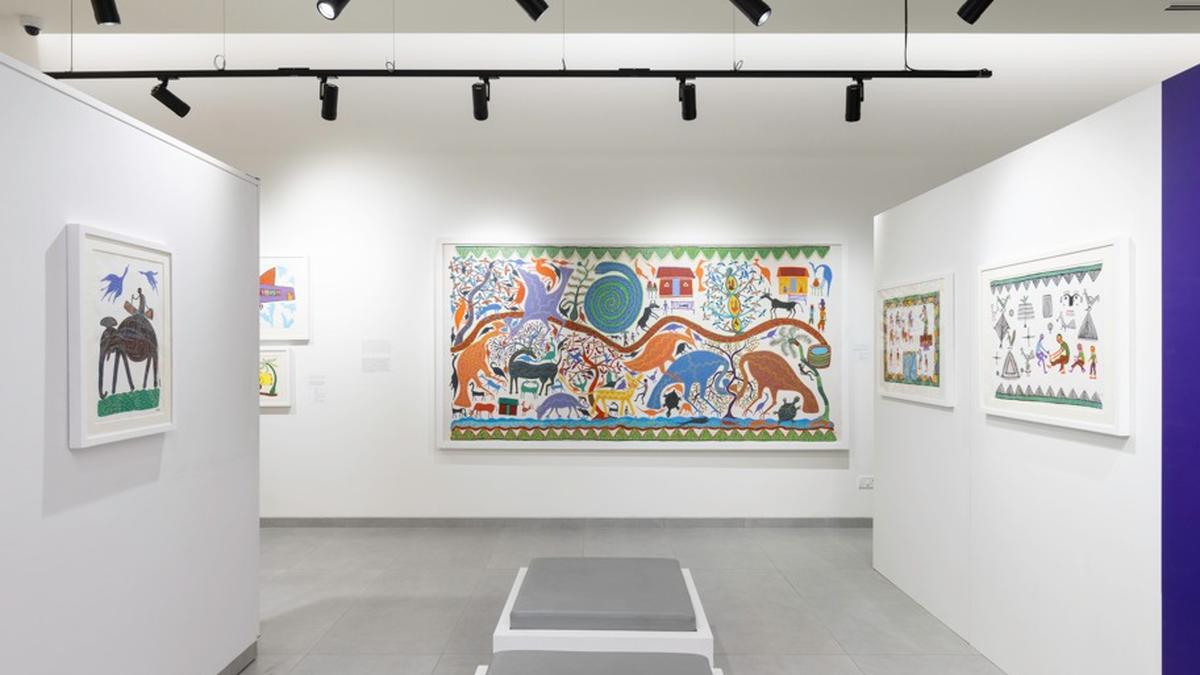
The evolution of Hyderabad with layers of planning as Telangana marks its 11th foundation day. | Photo Credit: ARRANGEMENT

The evolution of Hyderabad with layers of planning as Telangana marks its 11th foundation day. | Photo Credit: ARRANGEMENT

The evolution of Hyderabad with layers of planning as Telangana marks its 11th foundation day. | Photo Credit: ARRANGEMENT
June 2 marks 11 years of the formation of Telangana. It also marks 218 years of the creation of Secunderabad. Between these two dates, a post-Independence one and a pre-colonial one, is the story of the explosive growth of an inclusive city that is now Brand Hyderabad. A city that spells biryani, chai, chips, code, and rings of circular roads.
Hyderabad was a 132 sq km city with 4,04,187 souls, inside a walled area with 14 gates in 1921 and was the fourth largest city in India. More than a 100 years later, Hyderabad is an urban sprawl of 1,451 square kilometres with 1,13,38,000 people ringed within a circular road with 21 interchanges and is the sixth largest city in the country. A growth of 999.24% in terms of land area and a population that has grown by 2705.13%.
In the process, the city has changed names from Golconda to Hyderabad to Secunderabad to Cyberabad and now the Future City envisioned by Chief Minister A. Revanth Reddy. The rulers and planners have come and gone but the trajectory of the growth of the city has been exponential. The movers and shakers for the city of Hyderabad have been a legion since the time of Mohammed Quli Qutb Shah and Mir Momin, continuing with Mir Osman Ali Khan, M. Visvesaraya, Mehr Ali Fazil, Mohammed Fayazuddin and Mehdi Nawaz Jung.
Then there were later day politicians who left their stamp on the city — N. Chandrababu Naidu, Y.S. Rajasekhara Reddy, K.T. Rama Rao and now A. Revanth Reddy. There also have been countless other bureaucrats and technocrats who have left behind a legacy.
“Cities grow organically with nudges for change in a particular direction. But some areas of the city have developed too rapidly discarding principles of planning like in Cyberabad. Jubilee Hills was a planned residential area but was turned into something else. Similarly, Musi beautification and Imlibun park were planned earlier but we are coming to that after a detour,” says historian and engineer Sajjad Shahid. “Coupled with that there was no sanctity to a master plan. There were hundreds of notices of change in land use undoing the master plan,” says Mr. Shahid.
Planned city
“Geography, topography, history and culture have driven Hyderabad’s planning. It was a planned city in Hyderabad state. There was planning till 1956. Not just Hyderabad but areas like Karimnagar, Adilabad, Warangal and other cities were planned and nurtured,” says Anuradha Reddy linking the earlier planned cities to the outer walls that enclosed Hyderabad and Warangal.
But the walls of planning made way for roads when Hyderabad was born with Charminar as its centrepiece and four radiating roads connecting it to the port city of Machilipatnam. The 1591 plan with the east-west and north-south axial roads made way for circular roads.
1930 map
This is a 1930 map of Hyderabad which bears the signature of Meher Ali Fazil, the superintending engineer, at that time. The map has the earliest outline of an Outer Circular Road that had a 30 km circumference. Enclosed within it was the River Road Circuit that circled back girdling both the banks of the Musi River between Chaderghat and Purana Pul. This model was transformed by the earliest town planner in India — Mohammed Fayazuddin, who, in 1944, created the Outer Circular Road that became the present-day Outer Ring Road.
“Road networks are a kind of flood mitigation measures. When you don’t run a road through a settlement, it would bring down noise and vehicular pollution. As the road was in the periphery, it created potential for growth of other areas,” says architect Pingali Naga Praveen.
“The latter day planners like HMDA, HUDA and other development authorities had these plans in front of them and they incorporated them. River circuit road should have been an alternative means of transport but it did not take off in a big way. But the Inner Circular Road was an idea ahead of its time that was aimed at decongesting the traffic even when the situation was not so bad,” says Mr. Praveen.
This is proving to be the USP of new residential areas that are popping up around the ORR. Outside the JBS Metro Station is the advertisement for villas near the Outer Ring Road in Gowdavelli with each of the houses costing upwards of ₹3 crore.
Incidentally, these were planned in the 1933 map, where the area was earmarked as “suburb to be developed as a residential area”. The key line being “10 minutes from Outer Ring Road”. The 158-km ORR is now set to be dwarfed by a 340-km Regional Ring Road.
Published - June 01, 2025 08:25 pm IST



.png)
.png)
.png)
















 1 day ago
5
1 day ago
5









 English (US) ·
English (US) ·